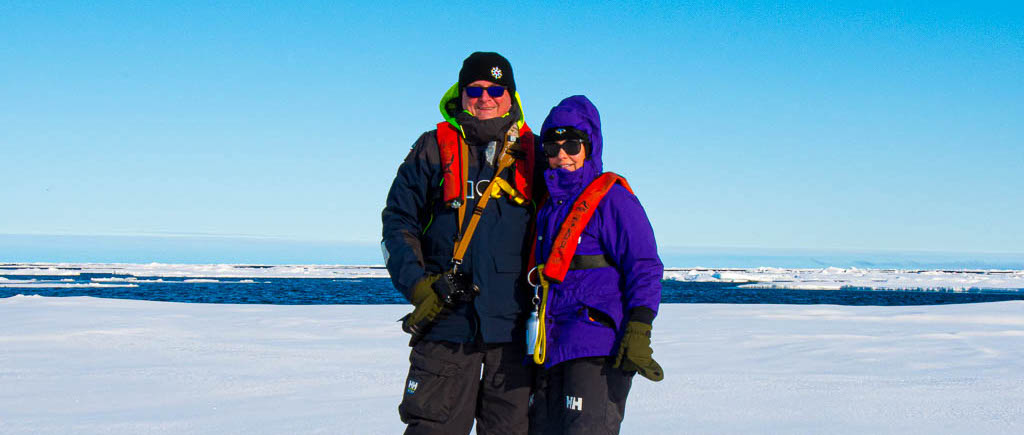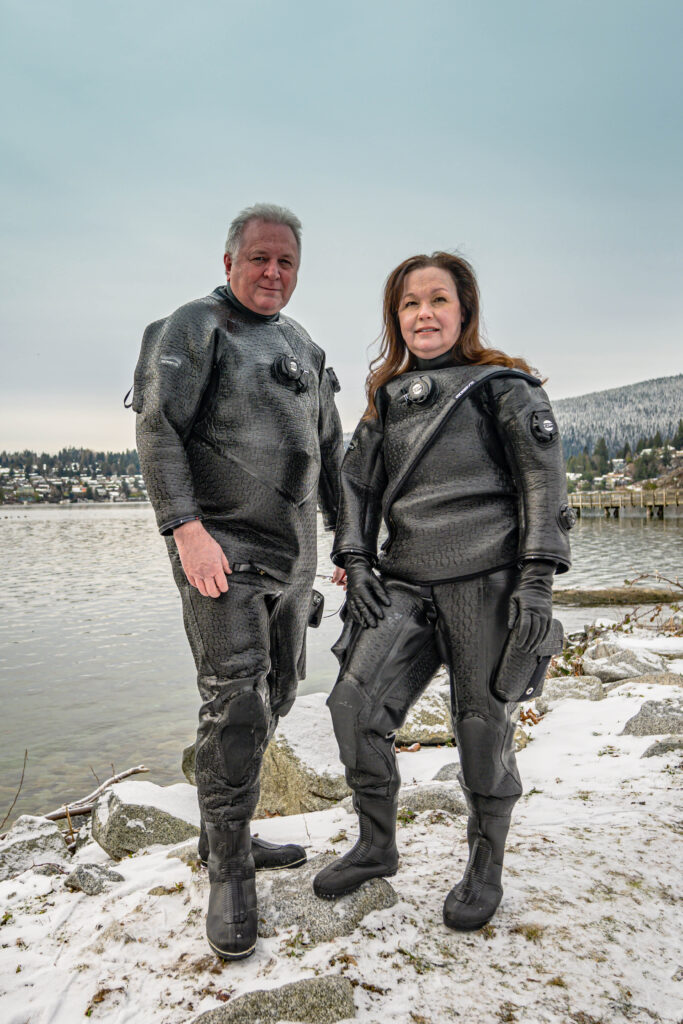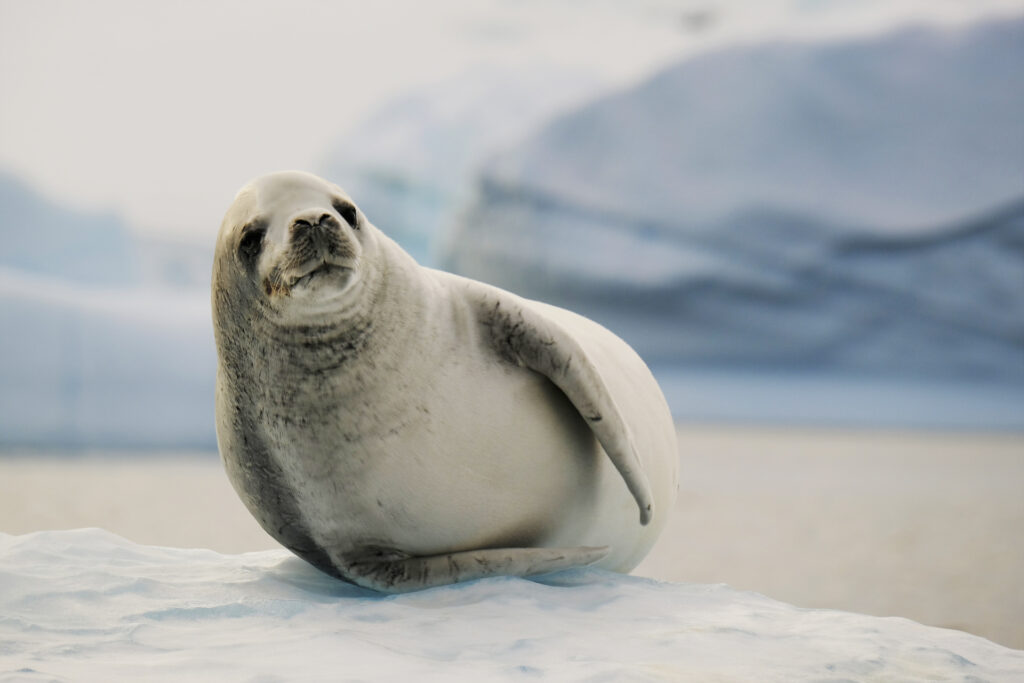Jett and Kathryn Britnell are an adventurous duo who wear many hats in the world of exploration! They are professional underwater, wildlife and expedition photographers, scuba divers, internationally published writers, marine conservationists, and intrepid explorers. We are excited to have Jett and Kathryn joining us as Special Guests on Circle and Weddell departing on the 8th of March 2024.
While Jett has been deeply involved in the world of diving and photography from a young age, Kathryn’s journey into these fields began after meeting Jett in 2007. Since then, she has embraced diving and photography and earned recognition as a Fellow in prestigious organisations such as the Explorers Club, Royal Canadian Geographic Society, and the Royal Geographic Society. Together, they form a dynamic team of photojournalists, capturing the wonders of the underwater world and sharing their passion with the world.
We sat down with Jett to find out more about his journey into dive photography, his career highlights, his upcoming trip to Antarctica and what fellow expeditioners can expect to learn from him.

I always had in the back of my mind that an editor might say “you’re not a writer because you have no formal degree in Journalism”. It took a long time before I would call myself a writer. But after hundreds of your stories are published you realize, “Yes, you are a writer.”
Jett Britnell
Have you always been interested in scuba diving and underwater photography?
Diving has always been a part of who I am. Since I was five years old, I had a deep desire to become a diver. When I finally got the opportunity at the age of 22, I instantly fell in love with it. A year into my diving journey, I discovered the captivating photos taken by other divers, which sparked my passion for underwater photography.
With my first camera, I started practising by taking snapshots of friends and family. This was during the early days of photography, when I had to learn the intricacies of using a Manual F Stop, controlling shutter speeds and being limited in shots by film rolls. Unlike most photographers, I learned everything about photography while diving, despite the limited time available to capture images underwater.
When did you realise that your hobbies could become your full-time vocations?
I always thought that I wanted to be a writer, but I didn’t know how to make that work. Then I started taking underwater photos, but understood you had to be really good to get your work published. So, I worked up to a place where I thought my photos were good enough, and the editors of magazines agreed.
However, to sell pictures the editors wanted to buy a story. I had the choice of writing the story or getting someone else to write it. I decided to write the stories because it was more practical as I had been to these places. At first, writing felt like a chore and a necessary evil, but I’ve grown to love it as much as I love photography.
How did you know that you had made it as a photojournalist?
Securing cover shots and features stories from the start was a dream come true. Right out the gate, I’d arrived! But I knew I didn’t want that to be the end of my journalism career. So that summer I went to the library and pulled out every book I could find about magazine writing and how to work with editors.
I expanded my reach, selling stories to magazines in Florida and England, and my British Columbia dive stories started being published globally. One magazine in Florida couldn’t pay me, but the exposure was invaluable. They sent me to Vanuatu, confident in my photography skills, and it paid off. An advertiser even bought one of my photos for a diving equipment show, further establishing my international presence as a writer and photographer. Throughout the next decade, I earned recognition for putting British Columbia diving on the map.
I always had in the back of my mind that an editor might say “you’re not a writer because you have no formal degree in Journalism”. It took a long time before I would call myself a writer. But after hundreds of your stories are published you realize, “Yes, you are a writer.”
What's your biggest accomplishment in your career to date?
Becoming the Canadian Chapter Chair for the Explorers Club is a defining highlight for me.
The Explorers Club has less than 4,000 members worldwide. It is made up of people who have established themselves in science or conservation and done something significant in these fields. There are two levels: Members and Fellows. Fellows are those who have published or documented something for humankind.
What we share is a way of looking at the world based on science – a foundation on how to live your life.
There are so many opportunities to have enriching conversations at the club. You could be talking to an Astronaut one day, deep sea explorers the next and then someone who has summited Everest seven times.
Just recently I helped a glassblower bury two handmade globes – one in Northern BC and the other in the Philippines. I sent him the GPS coordinates and one day he’ll publish a book about them, hoping people will find them. I love that I get to get involved in projects like this.
You talk to any Explorers Club member you think, “Nah, I’m not qualified… I haven’t been to the moon; I haven’t been to Everest. To get involved in the club, I had to differentiate between ‘travel writing’ and adventure pieces like diving shipwrecks no one has ever explored before or visiting First Nation burial sites.
Notably, Kathryn, has achieved a remarkable feat by becoming a Fellow in the Explorers Club, Royal Canadian Geographic Society and the Royal Geographic Society—the trifecta! What’s more, she achieved this in half the time it took me.
Are you and Kathryn working on any projects together at the moment?
While Kathryn maintains a busy corporate job, I take on a greater role in writing. However, we write a column together for Luxe Beat where we have the freedom to select and curate our content.
During our recent expedition to Svalbard, we explored various museums in Oslo and Svalbard, and crafted an article about our experiences. Kathryn has excelled as a photographer, so we featured more of her images than my own.
I approach it pragmatically, not becoming overly attached to my own photos. I find joy in seeing others shine and succeed, so when I saw Kathryn’s exceptional images, it was an obvious choice to showcase them.

Jett's Top 3 Tips for underwater photography
1. Master your diving skills
Good buoyancy control and comfort in the water are crucial.
2. Familiarise yourself with your equipment
Spend time in a dark environment, manipulating the controls and getting a feel for them. It’s like learning to drive a car; as you gain experience, you become more relaxed and focused on the bigger picture.
3. Develop your creative eye
Take moments to observe without the camera, honing your ability to see the nuances of light and composition. Patience is key in underwater photography.
Remember: a digital camera provides ample opportunity to capture numerous shots. However, it only takes one great photo to make an impact!
What are you most looking forward to about your upcoming voyage to Antarctica with Aurora?
It’s Antarctica! I’m looking forward to potentially diving somewhere nowhere else has been, and documenting Antarctica for posterity. The world is changing, the climate is changing, and we’re losing habitats. Writing a story and documenting the current state will allow people to witness the differences over time.
Plus, getting to go on an expedition ship is exciting as you get to know the people on board intimately. They are there for similar reasons, which brings something special to this type of trip.
Browse a gallery of Jett's work

Join Jett and Kathryn on our Circle and Weddell Expedition
Antarctic adventurers can aim to tick two boxes off their bucket list on this voyage, where you have the opportunity to visit regions in Antarctica that most people will never experience, not even among those who have been to Antarctica – below the Antarctic Circle and attempting to forge a path through the ice in the Weddell Sea. As you venture south on the western side of the Antarctic Peninsula, passing spectacular, towering cliffs and glittering icebergs, there is a chance you may see Adélie penguins and ice seals such as leopard and crabeater seals resting on ice floes.
Browse All Weddell Sea Voyages
In Shackleton's Footsteps
Expedition
Welcome to our NEW In Shackleton’s Footsteps expedition.Follow in the footsteps of ‘the Boss’ on this quintessential polar voyage, from the serene ice of the deep south to the subantarctic...
20 Days
From USD $21,436.00/pp
Wild Antarctica featuring the Weddell Sea
Expedition
Welcome to Aurora Expeditions’ Wild Antarctica featuring the Weddell Sea expedition. Famed for its enormous icebergs, year-round sea ice, fascinating fossils and the pivotal role it played in Shackleton’s Endurance expedition,...
12-13 Days
From USD $11,676.00/pp

